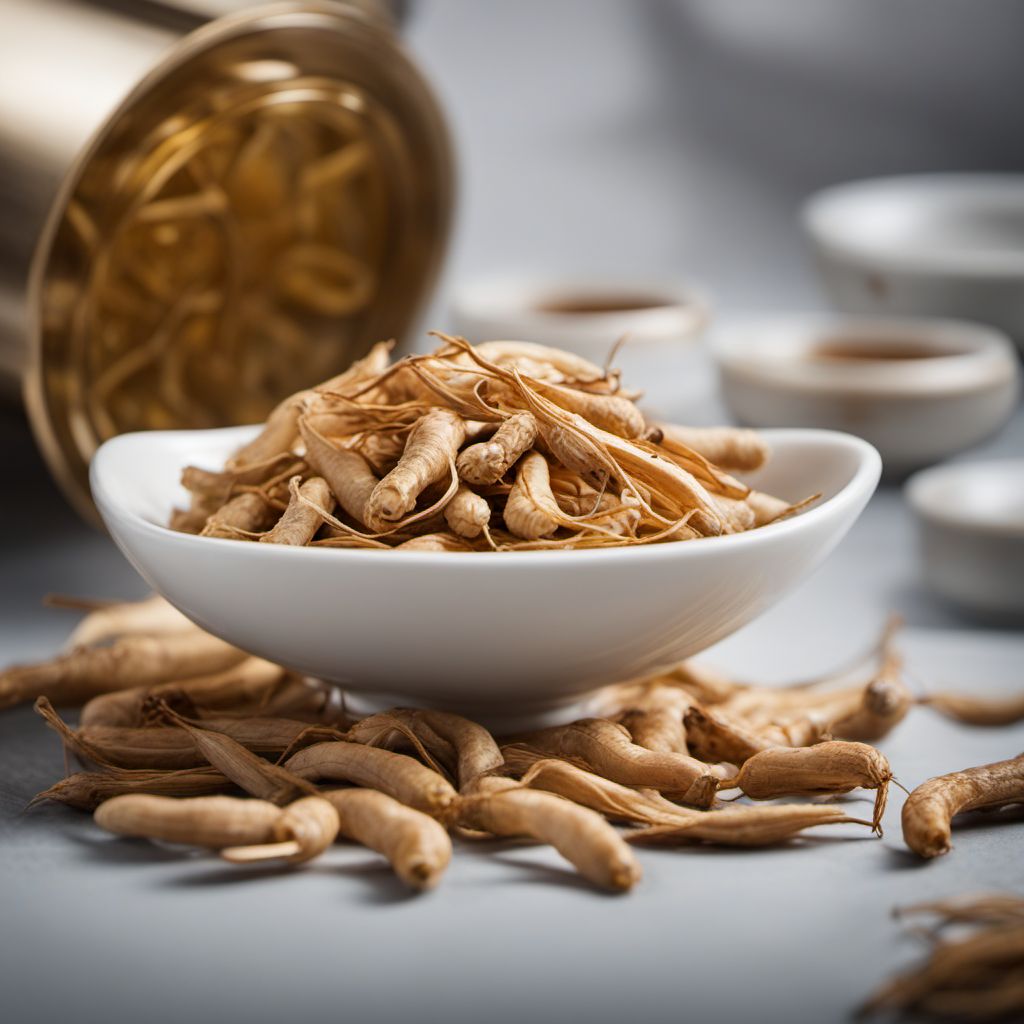
Ingredient
Asian ginseng infusion roots
The Power of Asian Ginseng
Asian ginseng infusion roots, also known as Panax ginseng, are highly valued for their adaptogenic properties and are commonly used in traditional Asian medicine. These roots have a distinct earthy and slightly bitter taste, with a fibrous texture and a light brown appearance.
Origins and history
Asian ginseng has a rich history dating back thousands of years in traditional Chinese medicine. It is believed to boost energy, improve cognitive function, and strengthen the immune system. Cultivated primarily in China and Korea, Asian ginseng has been revered for its medicinal benefits and is often used as a natural remedy for various ailments.
Nutritional information
Asian ginseng infusion roots are a nutritional powerhouse, containing essential vitamins and minerals such as vitamin C, iron, and potassium. They are also known for their adaptogenic properties, which help the body cope with stress and promote overall well-being.
Allergens
May cause allergic reactions in some individuals.
How to select
When selecting Asian ginseng infusion roots, look for firm and plump roots with a smooth outer skin. Avoid roots that are soft, shriveled, or have moldy spots. Opt for roots that are at least 4 years old, as they are believed to have higher levels of beneficial compounds.
Storage recommendations
To maintain the freshness and quality of Asian ginseng infusion roots, store them in a cool, dry place, away from direct sunlight. It is recommended to keep them in an airtight container or a sealed plastic bag to prevent moisture loss. Properly stored roots can last for several months.
How to produce
Asian ginseng is typically grown in specialized farms under controlled conditions. It requires a cool climate, well-drained soil, and partial shade to thrive. Growing Asian ginseng at home may be challenging, as it requires specific environmental conditions and a long growth period of 4-6 years before the roots can be harvested.
Preparation tips
Asian ginseng infusion roots can be used in various forms, such as teas, tinctures, or as an ingredient in soups, stews, and stir-fries. To prepare a tea, steep a few slices of the root in hot water for 15-20 minutes. The roots can also be added to broths or simmered with other ingredients to infuse their flavors into the dish.
Substitutions
American ginseng can be used as a substitute for Asian ginseng infusion roots, although it has a milder flavor. Siberian ginseng, although not a true ginseng, can also be used as a substitute due to its similar adaptogenic properties.
Culinary uses
Asian ginseng infusion roots are commonly used in traditional Asian cuisines, particularly in soups, herbal teas, and tonics. They are also used in desserts, confections, and as a flavoring agent in alcoholic beverages.
Availability
Commonly available in China, Korea, and other Asian countries.
